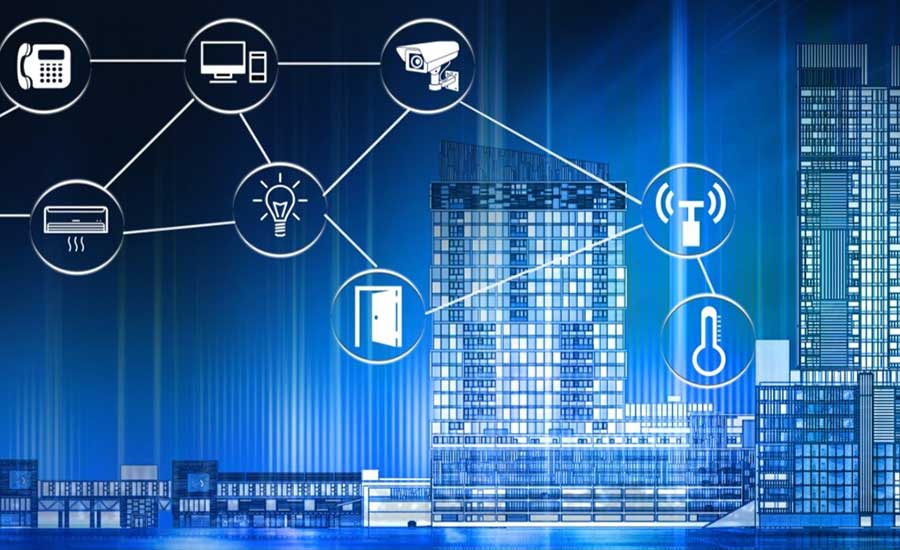
Building Automation: Shaping the Future of Intelligent Buildings
Introduction
The advancement of technology has led to a revolution in building automation, changing the way we manage and operate buildings in today’s world. To gain a better understanding of the future of building automation and its potential impact on various industries, insights from industry leaders are crucial.
Historical Background
Building automation has come a long way since its origins in the early 20th century, when simple electrical controls were used to automate repetitive tasks in buildings. However, with the introduction of computer-based systems in the 1970s, building automation evolved into a more sophisticated and integrated approach. Today, it plays a vital role in enhancing energy efficiency, occupant comfort, and overall building performance.
Key Concepts and Definitions
Building automation refers to the centralized control of a building’s systems, including heating, ventilation, air conditioning (HVAC), lighting, security, and more. It relies on interconnected devices and sensors to collect and analyze data for optimizing building operations. To understand building automation, it is essential to define key terms such as the Internet of Things (IoT), Artificial Intelligence (AI), and data analytics. IoT enables the connectivity and communication of devices, while AI allows for intelligent decision-making and automation. Data analytics leverages the power of data to gain valuable insights and optimize building performance.
Main Discussion Points
The Role of IoT in Building Automation
IoT technology has transformed building automation by enabling seamless connectivity and communication among devices. This connectivity allows for real-time monitoring and control of various building systems, leading to improved energy efficiency, cost savings, and enhanced occupant comfort. Interconnected devices and sensors provide valuable data for predictive maintenance, space utilization, and even health and safety measures.
Artificial Intelligence and Machine Learning in Building Automation
Integrating AI and machine learning algorithms into building automation systems opens up new possibilities for optimization. These technologies can analyze large amounts of data to identify patterns, make predictions, and optimize energy consumption. AI can also analyze occupant behavior to personalize comfort settings and identify opportunities for energy savings. However, it is important to address potential challenges and ethical considerations, such as data privacy and transparency, when implementing AI in building automation.
Data Analytics and Optimization
Data analytics is a crucial component of building automation as it allows for informed decision-making and optimization. Advanced analytics can unlock valuable insights from building data, enabling facility managers to identify energy waste, optimize HVAC systems, and schedule maintenance more efficiently. Big data plays a significant role in building automation, offering opportunities for predictive analytics, anomaly detection, and continuous improvement.
Case Studies or Examples
Real-world examples of successful building automation projects showcase the potential of this technology. For instance, the Edge building in Amsterdam, known as the world’s most sustainable office building, utilizes IoT, AI, and data analytics to optimize energy consumption, space utilization, and indoor comfort. Another example is the Willis Tower in Chicago, where a comprehensive building automation system has led to significant energy savings and improved tenant satisfaction.
Current Trends or Developments
The adoption of building automation has been accelerated by the COVID-19 pandemic, as it addresses health and safety concerns. Systems that monitor air quality, occupancy levels, and enable touchless controls have become crucial in creating a safe and healthy indoor environment. Additionally, emerging technologies such as 5G, edge computing, and blockchain are shaping the future of building automation, enabling faster data processing, improved connectivity, and enhanced security.
Challenges or Controversies
While implementing building automation systems brings numerous benefits, it is not without challenges. Privacy concerns related to the collection and use of personal data need to be addressed. Cybersecurity is another critical aspect, as interconnected devices can be vulnerable to cyber threats. Moreover, the automation of certain job roles can lead to workforce displacement, raising ethical considerations that need to be carefully managed.
Future Outlook
The future of building automation holds exciting possibilities. Advancements in technology will enable even smarter buildings, with increased automation, energy efficiency, and occupant comfort. Sustainability and green building practices will play a pivotal role, with a focus on renewable energy, circular economy principles, and reducing carbon footprints. Building automation will continue to evolve, driving innovation and shaping the future of intelligent buildings.
Conclusion
Building automation has transformed the way we manage buildings, offering immense potential for energy savings, cost reduction, and improved occupant comfort. Insights from industry leaders provide valuable guidance in understanding and harnessing the power of building automation to create smarter, sustainable, and more efficient buildings. Although challenges exist, the benefits of building automation outweigh them, making it a pivotal technology for the future of intelligent buildings.
References
Building Automation: A Comprehensive Guide, Smart Buildings Magazine
IoT-Based Building Automation Systems: Challenges and Opportunities, IEEE Internet of Things Journal
The Edge: A Sustainable Building Powered by IoT and AI, Deloitte
Willis Tower Case Study: Leveraging Building Automation for Energy Efficiency, Siemens Building Technologies
Building Automation and Controls Market Size, Share & Trends Analysis Report, Grand View Research